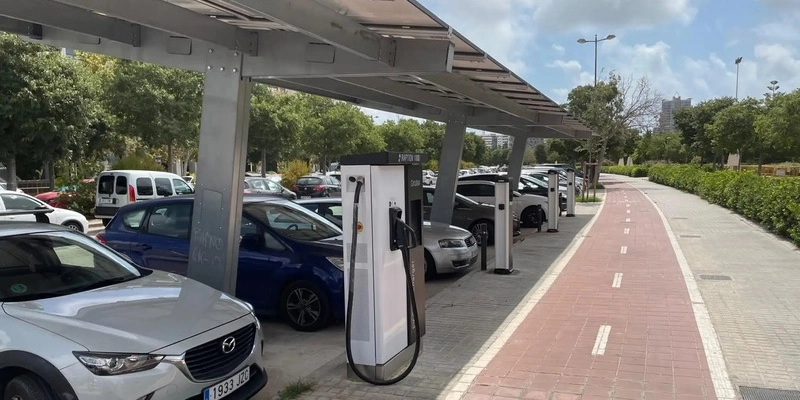With more than 37,000 public charging points installed nationwide, the eMobility sector faces considerable challenges.
Emilio José Fernández Rey, Technical Manager of Electric Charging at Madic Iberia, warns that the growth of CPOs is conditioned by an electric vehicle market that “is struggling to take off.”
“In 2024, we are stuck at figures similar to those of 2023,” he tells Mobility Portal España, highlighting that the low penetration of these cars limits the profitability of “refuelling” stations.
What is the reason for this? One of the factors limiting the adoption of this mobility is the persistence of myths and misinformation.
“The fear of the new, as well as the pressure exerted by the sector’s lobbies, is causing Europe, and Spain in particular, to be falling behind in this transition,” he says.
He explains that most users who buy zero- and low-emission cars have parking spaces with their own chargers, which reduces the frequency of use of public charging stations.

“This significantly limits the characteristics of the type of client that CPOs should focus on if they want to make their points profitable from day one,” he says.
This trend is beginning to change and more and more drivers are seeing public charging as an alternative for their trips.
The choice of location for the points is, without a doubt, one of the aspects that most concerns CPOs.
Fernández warns: “The best locations for installing hubs are already occupied.”
“Selecting a site where you are going to make a significant investment, which in the case of hubs will easily exceed one million euros, requires being very sure,” he adds.
Having accurate data on energy availability and the flow of potential users in each location therefore becomes an essential competitive advantage.
“Choosing an inappropriate location carries a high risk,” says the expert.
And not only that.
The recharge price is a determining factor in attracting customers.
According to Fernández, there are “refueling” stations that, despite not being located in strategic areas, have a high occupancy rate thanks to their affordable rates.
“It is important that CPOs cover all segments of the sector, not just travel charging,” he explains.
In this context, he highlights the opportunity that points represent in holiday destinations, given the difficulty that users face in finding these services.
For the expert, differentiation is not only based on location or price, but also on the offer of additional services.
Elements such as the possibility of card payment and the use of technologies such as Autocharge/Plug&Charge are becoming increasingly important.
“In Spain, if you get a good location and offer a reasonable recharging price, it is easy to make the numbers add up,” he points out.
At this point, he stresses that specialisation and adaptation to market needs will be essential to ensure long-term profitability.
Market saturation and limited spaces in cities are leading CPOs to explore new sourcing formats.
Fernández mentions the trend of ultra-fast equipment in urban areas as an effective response to maximise the use of parking space and offer a service that allows the user to gain autonomy in just 15 or 20 minutes.
What are the technical challenges?
Among the main challenges faced by CPOs in Spain, Fernández points to the complexity of obtaining accurate information on energy capacity at each location.
“Just knowing how much power is available at a location is a difficult task,” he says.
This problem will be resolved with the public network power map that is being developed by the National Commission of Markets and Competition, although it is expected to be published in approximately two years.
In this context, Fernández adds that, in many cases, the capacity is insufficient to install high-capacity chargers.
Faced with this limitation, some CPOs choose to integrate batteries and photovoltaic panels, a strategy that, while helping to compensate for the lack of power, significantly increases investment.
Added to these challenges is the lack of qualified professionals in the sector.
The expert stresses that there is a high demand for electrical technicians and electrical engineers capable of designing, installing and maintaining charging infrastructure.
In this regard, he emphasises the need to train more specialists in the field of electric mobility.








